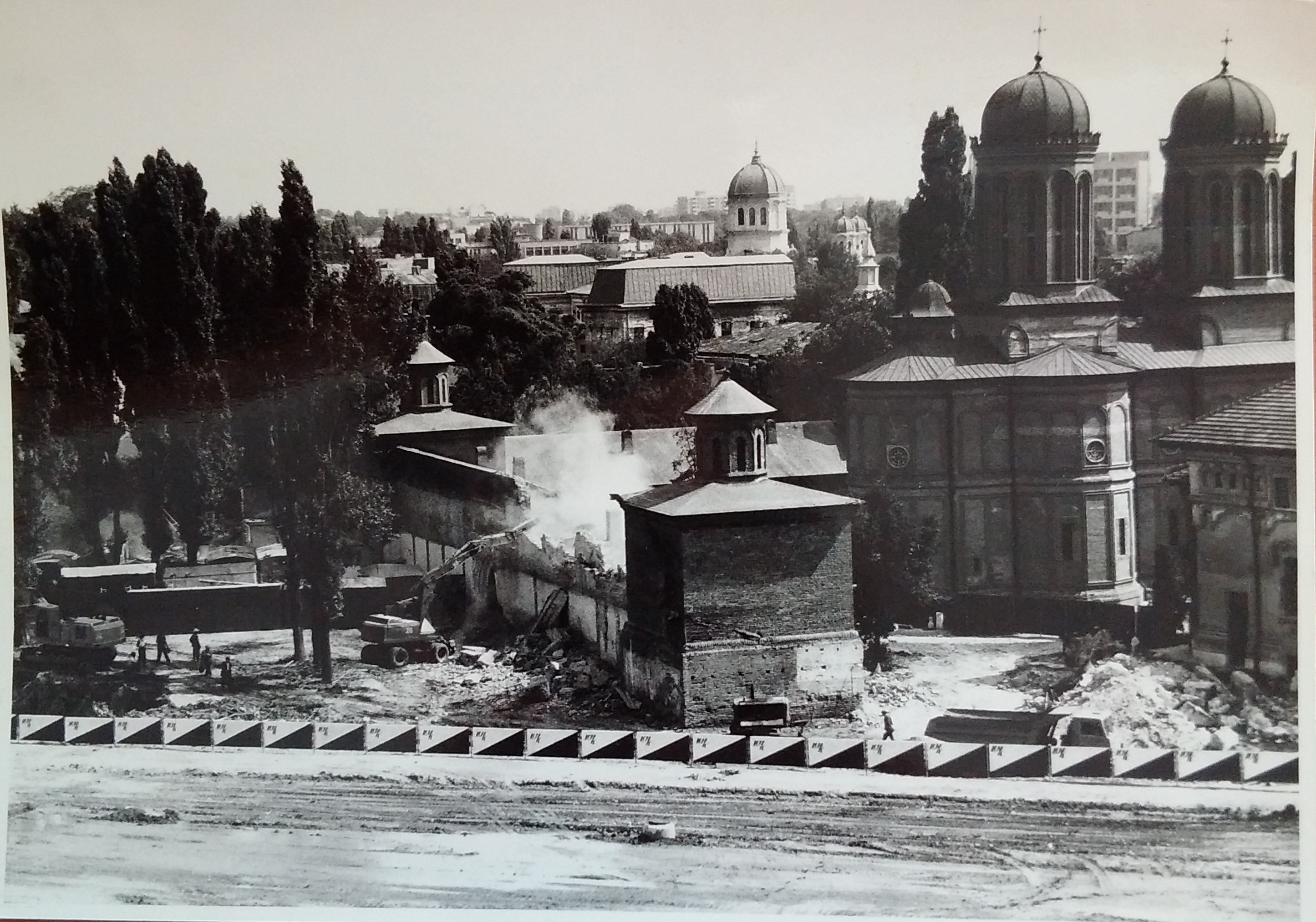The Ștefan Gane Collection was established and subsequently organised by the architect in Bucharest starting from 1977, after the devastating earthquake of 4 March that year. This private archive was continuously enriched between 1977 and the end of the collector's life in 1988, during which time he gathered materials relating to the project of demolishing large parts of Bucharest that was imposed by the communist dictatorship after the earthquake, as well as documents relating to his own activity and that of other personalities of the Romanian exile community directed towards communist Romania under the Ceaușescu regime. As a result, these documents represent an important source for understanding and writing the history of that particular segment of the Romanian exile community which was actively involved in the West in activities aimed at unmasking the abusive and destructive policies of the Ceauşescu regime with regard to the national heritage that were adopted between 1977 and 1989. In particular, this collection illustrates the efforts of the collector and of other personalities from the exile community to stop the systematisation of Bucharest.
Ștefan Gane worked as an architect in Bucharest from 1951 until 1985, when he emigrated to France. After the devastating earthquake of 4 March 1977, which served as a pretext for the destruction or mutilation of many historic monuments, he began to express his dissatisfaction with the Ceaușescu regime. His dissatisfaction with the policy of the communist authorities of systematising Bucharest's urban landscape could be termed as passive resistance. In the period in question, this passive resistance consisted in the immortalisation on photographic paper or slides of the historic monuments targeted for demolition. This passive resistance was confined to such actions, and did not extend to publicly criticising the regime, as the few dissidents in communist Romania did in the late 1980s. Nevertheless, Gane’s activity contributed to the preservation of the memory of the destroyed urban areas. The areas under demolition were photographed only in secret. Any disclosure of this action would have triggered the immediate intervention of the political police. Simply put, the clandestine photographs taken by the collector of historic monuments scheduled to be demolished ensured the preservation of their memory for future generations. As long as he lived in Romania, Ștefan Gane resorted to cultural opposition to an abusive policy of annihilating an essential part of the national past and acted for the preservation of Bucharest's memory. After he settled in Paris, he publicly and openly expressed his views on the demolition project devised by the Ceaușescu regime. In 1985, Ștefan Gane founded in Paris the International Association for the Protection of Monuments and Historic Sites in Romania. This association aimed at disseminating in the West information on the project of the communist regime in Romania regarding the demolition of the architectural and urban heritage, one of the most aberrant and abusive projects in the country's recent history. The ultimate goal of the association was to prompt foreign intervention to stop the project of the Romanian communist authorities. A ceremony took place when the Association was founded, and on the same occasion a demonstration against the destruction of historic buildings in Bucharest was organised on the streets of Paris. Photos taken at this demonstration are kept in the Ștefan Gane Collection.
Other photos in the Ștefan Gane Collection capture some historic buildings and monuments that were destroyed in the context of the 1977 earthquake. Subsequently, between 1977 and 1985, the collector also took black and white and colour photographs, as well as a series of slides of some historic monuments in Bucharest that were being demolished, mutilated, or moved by the Romanian communist authorities. He took these secretly with a personal camera, and took them with him clandestinely to France at the time of his emigration. From this point of view, Ștefan Gane's collection is an important historical source for understanding and writing the recent history of the country in connection with the demolition project of the city centre of Bucharest, which was to be reconstructed according to the communist architectural vision. Gane's action of immortalising images of Bucharest's historic buildings on slides contributes to the recovery of a part of the history of the country's capital. In addition to the black and white photographs, as well as the slides taken by the architect after the earthquake in 1977 and until the time of his emigration from Romania, Ștefan Gane's Collection includes some images that he cut from Romanian exile publications and the Western press between 1985 and 1988. These materials capture some national heritage monuments that were destroyed or mutilated by the communists in Bucharest, and that Western and exile publications presented to Western public opinion. The Ștefan Gane Collection also includes some postcards received by the architect between 1985 and 1988, when he was in exile in Paris. They contain images from some cities or regions of Romania (Bucharest, Galaţi, Botoşani, and Bucovina) from the pre-war, interwar, and post-war periods, which were sent to him in France by family and friends in Romania.
The collection of the architect Ștefan Gane is a repository of the memory of some historic monuments in Bucharest that were destroyed by the communist regime. The collector tried, through photography, to save from the oblivion a few places essential for the history of the capital of the country, thus carrying out between 1977 and 1985 a cultural opposition activity against an arbitrary policy of the Ceaușescu regime to annihilate an essential part of the national past. The photos and slides that make up his personal archive are a testimony to the Ceaușescu regime's policy of transforming the urban landscape and destroying what was not in line with the communist vision of national heritage.

